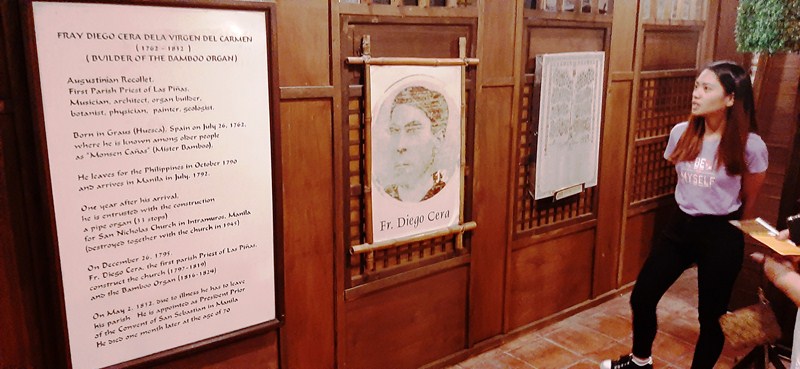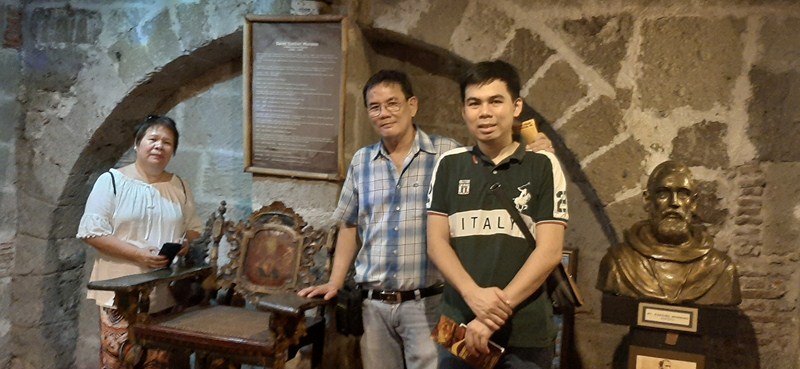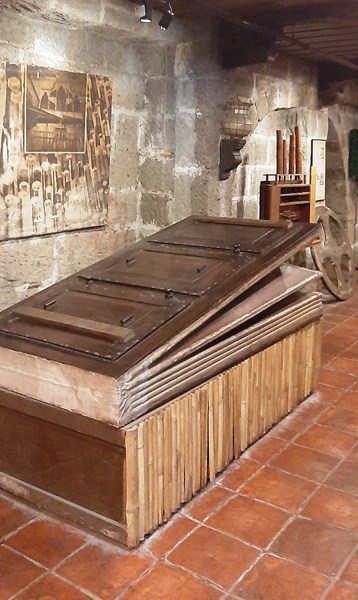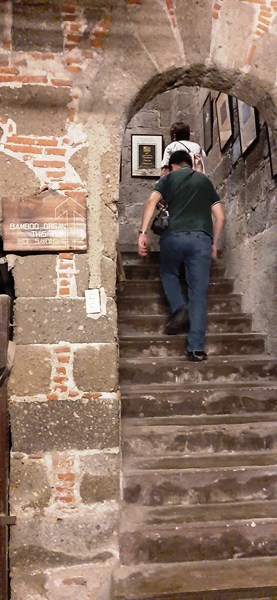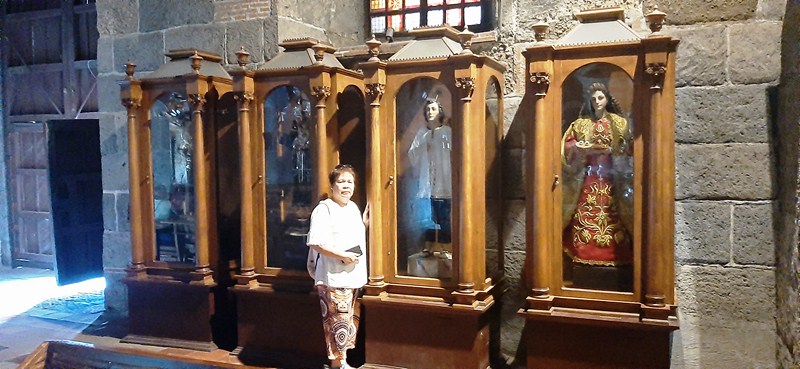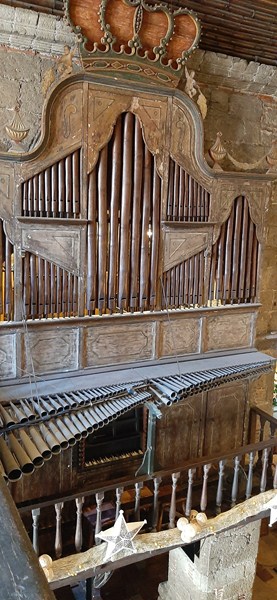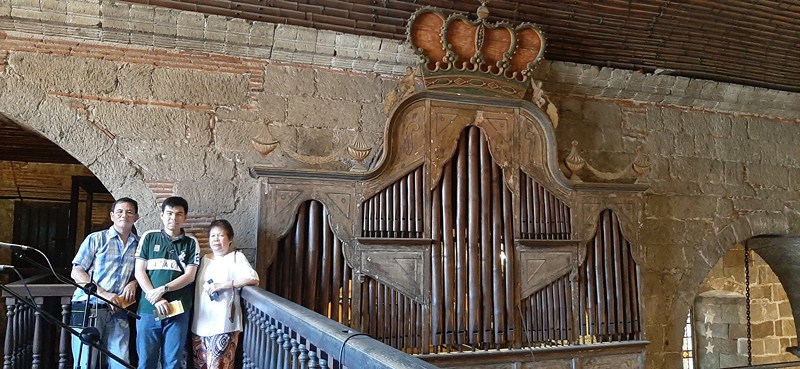Just before Christmas Eve, Jandy and I picked up Vicky Dionela, my wife’s balikbayan first cousin at my brother-in-law Mark’s residence in Citadella Village (Las Pinas City) to tour her around Manila before she returns to Vienna (Austria). I decided to bring them to the nearby Church of St. Joseph, home of the world-famous Bamboo Organ. This would be my second visit (the first was in February 2005) and the first for Jandy and Vicky.
Check out “Church of St. Joseph”
After our arrival, we decided to first visit the Bamboo Organ Museum situated within the old Spanish convent beside the church. Welcoming us at the main entrance is the huge original church bell with its wooden yoke (or headstock). The bell’s inscription reads “Siendo Cura-del Pueblo de Las Peñas el M.R.P. Padre Diego Cera se Fundio este equilon ano de 1820.” During the time of Fr. Diego Cera, the name of the town was “Las Peñas” until it was changed to “Las Piñas.”
After paying the admission fee, we were assigned a lady BOFI (Bamboo Organ Foundation, Inc.) tourist assistant. She narrated to us the humble beginnings of the church, how it was built and the important contributions on how it came to its present existence. She also narrated how Padre Diego Cera made the organ, how it was retrofitted in Germany, and finally its reinstallation at the church.
Check out “Bamboo Organ”
During our tour, we also learned that Spanish Augustinian Recollect missionary St. Ezequiel Moreno was once a parish priest in Las Piñas (from July 1876 to mid-1879). Now the patron saint of cancer patients, he was canonized by St. Pope John Paul II on October 11, 1992.
Inside the museum, we also enjoyed a comprehensive series of displays of religious artifacts, busts, priestly chairs, and the original parts of the organ (keyboard, the manually-operated giant bellows used to supply air to the organ; metal and old broken bamboo and pipes; etc.). There’s also a mini mock-up of the bamboo organ (also made of bamboo) which we can actually play. Our lady guide patiently explained to us its inner workings.
Hanging on the walls are old photographs relating to the famed Bamboo Organ and the church, showing the various stages of the church as time passed, as well as posters (declaration of the Bamboo Organ as a National Cultural Treasure, first Bamboo Organ Festival on Mar 6-11, 1976, etc.) and paintings.
We then went up an old stone staircase to the choir loft of the church where we saw the highlight of our tour – the world famous and majestic Bamboo Organ itself.
I’ve never seen the Bamboo Organ this close and I was surprised that there are a lot more pipes at its back than what’s seen from ground level.
After our guided tour of the museum, we toured the rest of the church before buying some souvenirs at the souvenir shop.
Bamboo Organ Museum: Padre Diego Cera Hall, St. Joseph Parish Church Compound, Diego Cera Ave., Brgy. Daniel Fajardo, Poblacion, Las Piñas City. Open Tuesdays – Sundays, 8 AM – 12 noon and 2 – 6 PM. Admission: PhP100 (adults), PhP50.00 (children). Admission includes a postcard, brochure and a guided tour. Tel: (02) 8825-7190 and (02) 8820-0795. Email: bambooorganfoundation@gmail.com. Website: bambooorgan.org/museum.
How to Get There: From the Star Mall in Alabang (formerly Metropolis), board a jeepney bound for Zapota Bayan and ask the driver to drop you off at the ‘Bamboo Organ.’ From Alabang, the church is on your left side.



